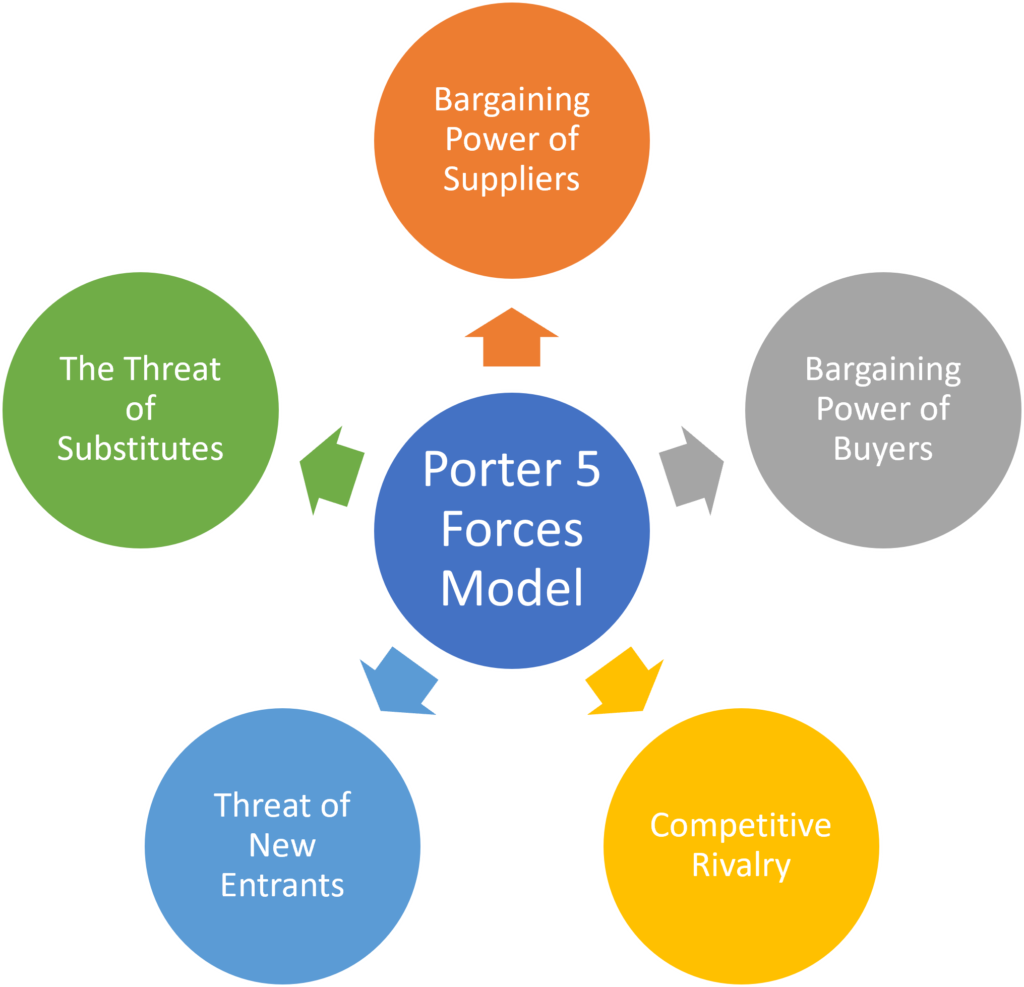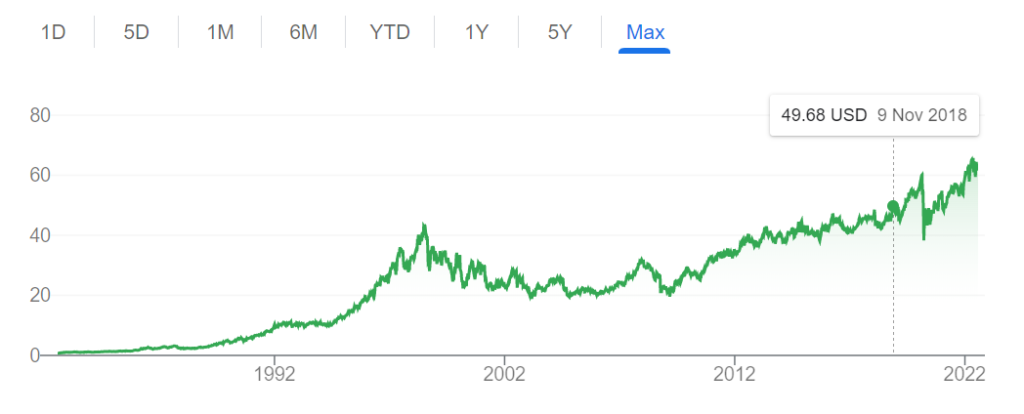Porter 5 Forces is a framework that helps business owners understand the competitive landscape of their industry and take steps to improve their position within it. This blog post will provide a detailed overview of the framework and its applications.
What is the Porter 5 Forces Model?

The Porter Forces is a strategic framework that is used to analyze the different forces that shape competition within an industry. This framework was developed by Michael E. Porter in his book, Competitive Strategy: Techniques for Analyzing Industries and Competitors. The Porter 5 Forces Framework is a great tool to study and analyze the attractiveness of an industry. In this blog, we will also develop a quantitative method for analyzing the Attractiveness of an Industry. Also, we will look into a detailed case study with an established company and analyze the attractiveness of an industry.
The Porter 5 Forces framework identifies five different forces that can shape competition within an industry. These forces are:
- The threat of new entrants: This force refers to the ease with which new firms can enter the market and compete with existing firms. If there are high barriers to entry, then new firms will find it difficult to enter the market and compete. This can lead to higher profits for existing firms.
- The bargaining power of buyers: This force refers to the ability of buyers (e.g., consumers) to negotiate lower prices from firms. If buyers have a lot of bargaining power, then they can drive down prices and reduce profits for firms.
- The bargaining power of suppliers: This force refers to the ability of suppliers (e.g., raw materials providers) to negotiate higher prices from firms. If suppliers have a lot of bargaining power, then they can drive up prices and reduce profits for firms.
- The threat of substitutes: This force refers to the availability of substitutes. Also, from a consumer loyalty perspective, how difficult it be for a new substitute to knockoff the incumbent
- Competitive Rivalry: This depends on the competitive rivalry that exists inside the business. Competitive rivalry comprises how closely the incumbents fight with each other. The fight can be represented by the similarity of products, Focus on Advertisement and Promotion, and strategies of operational excellence. On the other hand, a fiercely competitive environment ensures better policies to retain human resources and talent.
How to apply the Porter 5 Forces – A Quantitative Method
In this model, we will rate each parameter into the scoring of 1-5. Criteria for 1 and 5 are defined in the table below:
| Criteria | Definition of 1 | Definition of 5 |
| The threat of new entrants | The chances of a new player entering the industry are very high | The chances of a new player entering the industry are very low |
| The Bargaining power of Buyers | The Buyers in the industry are limited and they switch to another product without much consideration | The Buyers in the industry are High and the switching cost involved are significantly higher |
| The bargaining power of suppliers | Suppliers do not provide significant technology differentiation and can be switched for cost-effectiveness | Suppliers provide significant technology differentiation. They are strategic contributors to the final product |
| The threat of substitutes | Substitutes are available and can be switched by consumers without much thought or change of habits | Not many substitutes in the market |
| Competitive Rivalry | One is a significantly smaller player than the incumbent making the rivalry low | The market is fiercely competed by the incumbents and they demonstrate similar strategies and operational efficiencies |
After we have valued these parameters, we need to take a Product of all the scores and the inferences are provided below. Please note, these are just for reference, however, a higher score definitely represents higher relative attractiveness of the industry
| Score | Inference |
| Score Range 3125-2000 | Very Attractive Industry |
| Score Range 2000-1200 | Moderately Attractive Industry |
| Score Range 1200- 800 | Mildly attractive Industry |
| Score Below 800 | Good to Avoid |
Case Study
We will discuss the case of Coca-Cola, a Giant in the beverage manufacturing industry
The Threat of New Entrants: There are significant barriers to entry into the industry specifically on the scale at which Coca-Cola Operates. Coca-Cola has 1000s of bottling plants and thousands of distribution centers to match its scale. Hence, the Threat of New Entrants is Significantly lower.
We will rate it as a Solid 5
The Bargaining Power of Buyers: Buyers Exude significant loyalty. Also from an option point of view, they are limited to Pepsi. Hence, the bargaining power of the Buyers is significantly limited by the distribution reach of Coca Cola
We will rate it as a 4.5
The bargaining power of suppliers: The Suppliers of Coca-Cola are represented by bottlers and plastic bottle suppliers. There is no significant technology differentiation and the cost of Switching is relatively easy
We will rate it as a Solid 5
The threat of substitutes: The only substitute which can match the prowess of Coca-Cola is Pepsico. Hence There are not a lot of Substitutes available in the market.
We will rate it as a 4.5
Competitive Rivalry: Last but not least the competitive rivalry between Pepsico and Coca-Cola is very high. They match each other and compete in almost all markets and segments making them fierce rivals in operational excellence, pricing, and human resource retention.
We would rate it as a 4
The Net Aggregate Score for Coca-Cola = 5*4.5*5*4.5*4 = 2025
Hence, going by the aggregate score, we would consider Coca-Cola’s attractiveness in Industry to be Very High. The same is reciprocated by the fantastic financial performance and the way it defends the territory to kill new entrants. This is also represented by the shareholder’s value it has created over the years

What are some benefits of using the Porter 5 Forces?
There are several benefits to using the Porter Forces. First, it helps businesses to identify and understand the forces that are affecting their industry. This information can then be used to develop strategies to compete effectively in the marketplace.
Second, the Porter 5 Forces can help businesses to identify opportunities and threats in their industry. For example, if a business knows that there is a high level of competition in its industry, it can use this information to develop strategies to improve its competitive position.
Third, the Porter 5 Forces can help businesses to understand how changes in the marketplace will affect their business. For example, if a new technology is developed that will reduce the demand for a particular product, a business can use this information to adjust its production plans accordingly.
Are there any drawbacks to using the Porter 5 forces?
Porter 5 Forces Model is an useful tool for analyzing the competitive environment in which a business operates. However, there are some limitations to using this tool.
One of the main limitations is that it only considers the external environment. It does not take into account internal factors such as a company’s resources and capabilities. Additionally, Porter’s Five Forces only looks at the short-term and does not consider long-term changes or trends.
Another limitation is that the model is based on static concepts. This means that it does not take into account the fact that businesses are constantly changing and evolving. Additionally, it does not consider the role of government or other external factors that can impact a business.
Despite these limitations, Porter’s Five Forces is still a valuable tool for analyzing the competitive environment. It can help businesses to identify opportunities and threats and to make decisions about how to compete in their industry.
Conclusion
Porter 5 Forces is a powerful tool for business analysis and strategy development. It can help you to understand the competitive landscape, identify opportunities and threats, and develop strategies to build a sustainable competitive advantage. If you’re new to Porter’s Five Forces, I hope this blog has given you a good introduction to the framework and its applications. If you’re already familiar with it, I hope you’ve found some new insights or ideas for using it in your own work. Thanks for reading!
Samrat is a Delhi-based MBA from the Indian Institute of Management. He is a Strategy, AI, and Marketing Enthusiast and passionately writes about core and emerging topics in Management studies. Reach out to his LinkedIn for a discussion or follow his Quora Page
